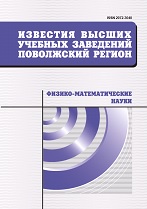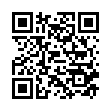|
|
University proceedings. Volga region. Physical and mathematical sciences, 2013, Issue 3, Pages 189–198
(Mi ivpnz402)
|
 |
|
 |
Physics
Current carriers in the narrow-band periodic Anderson-Hubbard model in the spin-wave temperature rage
V. E. Shilov, E. V. Shilova
Mari State University, Yoshkar-Ola
Abstract:
Background. The increased interest to the problem of considering atom-like behavior of d- and f-states along with the band effects is connected with numerous researchers' belief that strong electron correlations in the d-electron subsystem provide for relatively high temperatures of superconducting transition in such compounds as La$_{2-x}$ Sr$_x$ CuO$_4$, YBa$_2$Cu$_3$O$_{7-д}$, as well as the conductivity of transition metal oxides CrO$_2$, VO$_2$ and solutions such as Fe$_{1-x}$ Co$_x$ S$_2$. The use of the Anderson – Hubbard model seems to be very promising for the study of the conducting properties in materials with narrow energy bands. This paper investigates the conductivity of ferromagnetic material at low temperatures, when the main relaxation mechanism is the process of scattering by magnons in the case of strong electron correlations in narrow energy band. Materials and methods. The comparison of the theoretical results with experimental data and other theoretical works on the relaxation time dependence on the temperature and wave vector is carried out. The transition to Hubbard operators, which diagonalizes the single-site part of the Hamiltonian, allows using Green's technique of temperature functions for taking into account interstitial hopping term in the study of the model conducting properties. Calculation of the conductivity tensor is made up to the quadratic term for the transfer integral through crystal lattice sites. Results. The three-orbital Anderson – Hubbard model with degeneration and symmetric isotropic hopping integral is studied. A systematic procedure for calculating the interatomic correlations considering generalized Hubbard tensor operators is suggested. An example of calculating the spectrum of electronic excitations in the simplest case is given. The kinetic equation is used for calculating the conductivity of transition metal compounds with charge transfer along a narrow band. A formula for the conductivity of a ferromagnetic material at low temperatures, when the main relaxation mechanism is the scattering by magnons is deduced. Conclusions. The results show that the three-orbital modification of the Hubbard model is more effective to describe the behavior of two groups of strongly interacting electrons – those localized on the lattice sites and the conduction electrons. The analysis of the bottom portion of the energy spectrum allowed deducing a formula for the resistance that is connected with quasiparticles in one of the correlation zones and depends on the wave vector. The comparison of the article results with experimental data and results of other theoretical works for narrow-band solids is produced. The resulting material is designed to study optical absorption, ferromagnetic resonance, organic and high-temperature superconductors.
Keywords:
electrical resistivity, electron correlations, the effective mass, spin wave, relaxation time.
Citation:
V. E. Shilov, E. V. Shilova, “Current carriers in the narrow-band periodic Anderson-Hubbard model in the spin-wave temperature rage”, University proceedings. Volga region. Physical and mathematical sciences, 2013, no. 3, 189–198
Linking options:
https://www.mathnet.ru/eng/ivpnz402 https://www.mathnet.ru/eng/ivpnz/y2013/i3/p189
|

| Statistics & downloads: |
| Abstract page: | 31 | | Full-text PDF : | 22 | | References: | 18 |
|




 Contact us:
Contact us: Terms of Use
Terms of Use
 Registration to the website
Registration to the website Logotypes
Logotypes








 Citation in format
Citation in format 